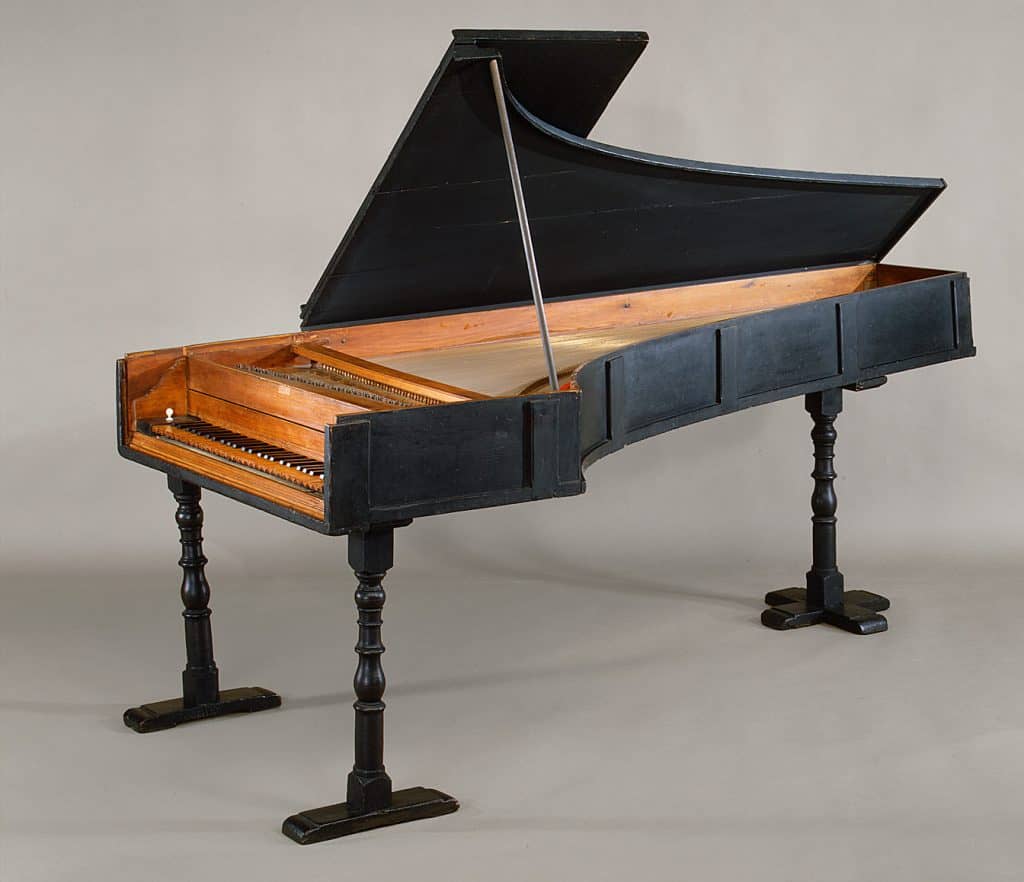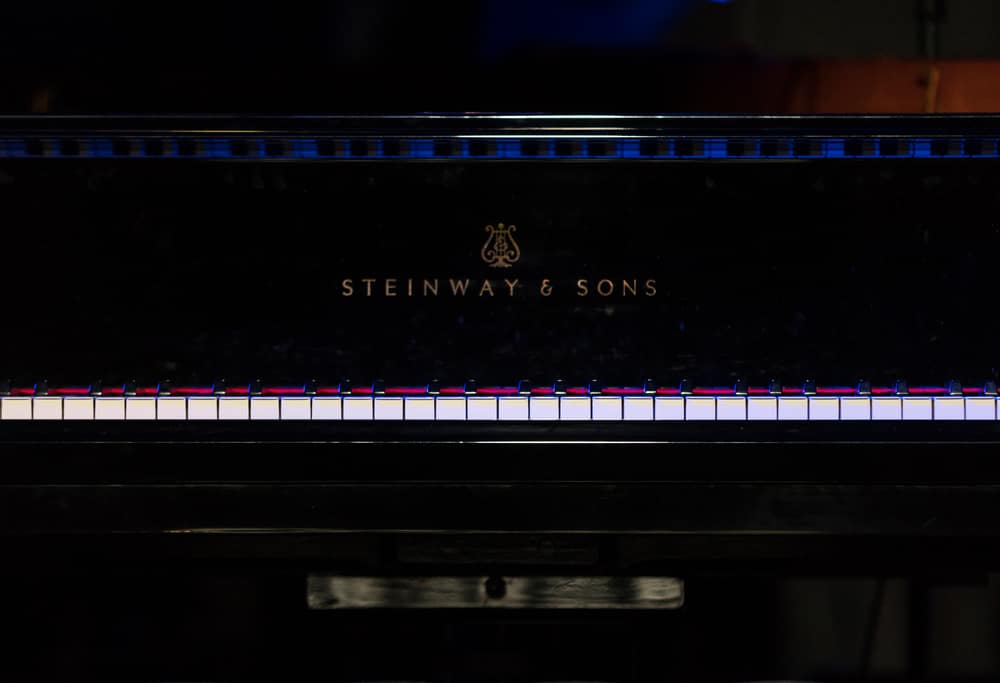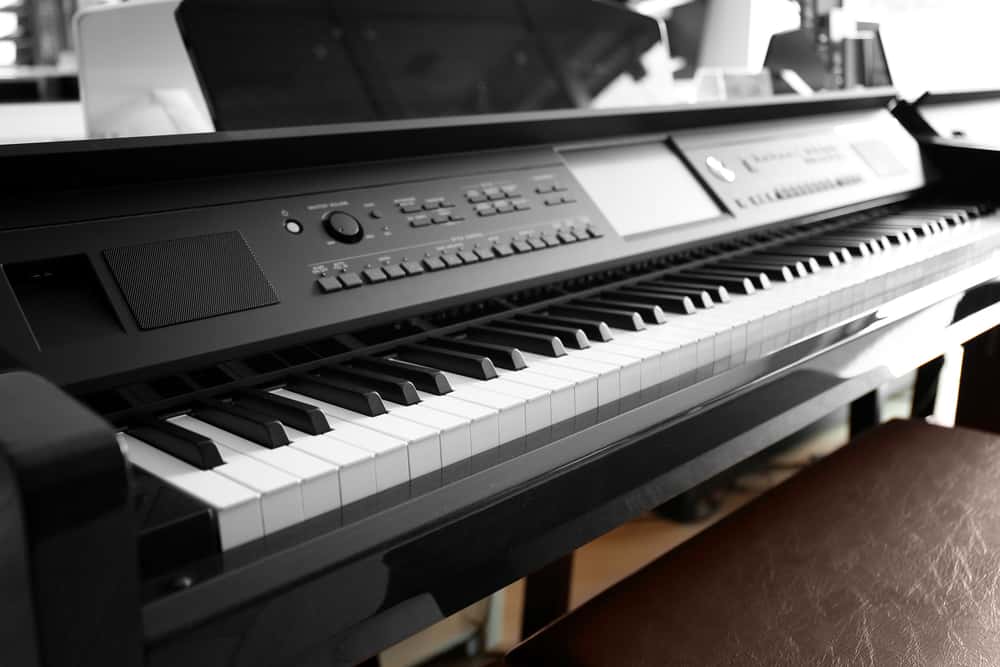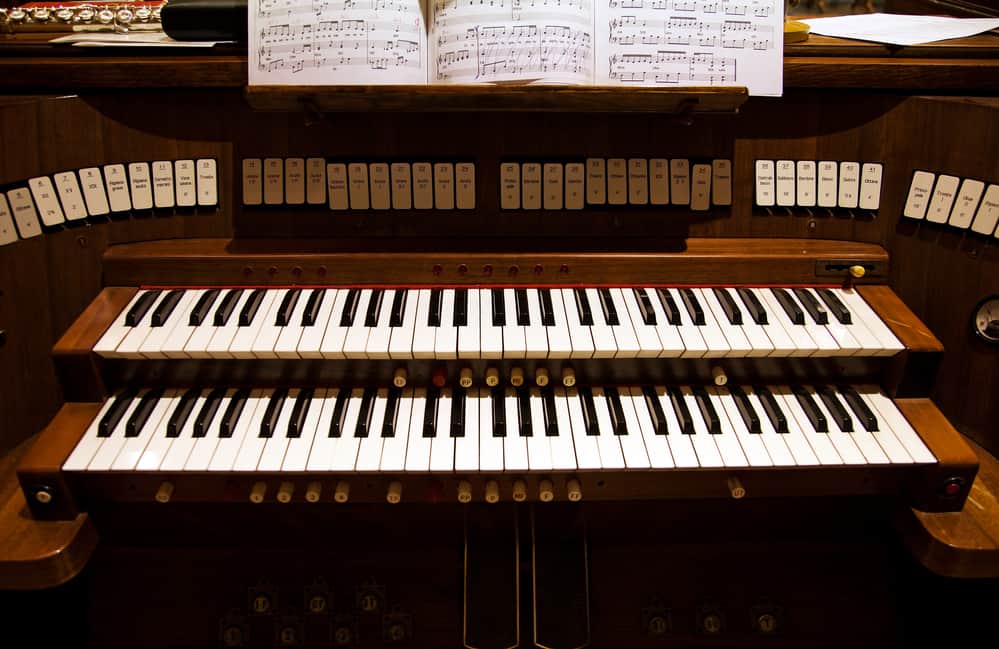If you’ve always wondered how many keys a piano has, or why it has that amount, this is for you. We’ll discuss the evolution of the piano and how it affected the number of keys on a piano, and take you through the best number of keys to buy for yourself.
So, if you’re a student looking to buy their first piano, or just a music lover trying to assimilate knowledge, grab a chair and let’s get started!
How many keys are on a piano?
Well, the easy answer is 88. There are 88 keys on a full-size piano. And, after learning this, people often follow up with:
How many white keys are on a piano?
There are 52 white keys on a piano. These are often called the ‘Ivory’ keys, as they are traditionally manufactured out of ivory, and of course, they have the off-white color of ivory.
How many black keys on the piano?
There are 36 black keys on a piano. These keys are called the “Ebony” keys, named after the Greek word ebenos, which was first used in the 17th century to describe a very dark color. If you ask any music students what the black keys are called, they’ll probably refer to sharps and flats, which are used to notate the black keys on sheet music.
The 52 white keys and 36 black keys are split up into octaves of 7 white, and 5 black keys each – totaling 7 octaves. There are also three additional notes below the lowest octave of the piano, namely a B, a B-flat and an A.
Now that you know how many keys a full-sized piano has, it might suit us well to back-track a little before looking at WHY a piano has 88 notes, and what the IDEAL amount of notes on a piano are.
A little history lesson
The piano as we know it only came into existence in the 17th century. Before it was invented, the harpsichord was the most popular instrument. In the grand era of harpsichord music, melody ranges were pretty limited, as harpsichords had only 60 keys.

So, composers like Bach and, Monteverdi and Vivaldi all composed a lot of music with a limited range of notes, as the only had the 5-octave range of the Harpsichord to work with.
Enter the year 1700. Bartolomeo Cristofori [1], an expert harpsichord maker under the employ of the Florentine court of Grand Prince Ferdinando de’ Medici, decided that it was time to update the instrument that he was so familiar with. He was the first person to manufacture a keyboard instrument with a hammer and damper mechanism. This keyboard had a range of just over 4 Octaves. The 54 keys of the instrument Cristofori created were pretty limiting – but, it served as an excellent inceptive piano that could be built on later.
Interestingly, Cristofori didn’t come up with the term “piano”. The popular poet Scipione Maffei described Critofori’s instrument as a ‘gravicembalo col piano, e forte’ – literally a harpsichord with soft and loud… Important to note that at this time, almost entering the classical era of music with composers like Beethoven and Mozart, most instruments didn’t have much of a dynamic range, and so the new pianoforte was the first instrument that directly responded to dynamic input (playing the keys hard resulted in a louder sound than pressing them softly).
This started the biggest developmental phase of the piano. The question “How many keys should a piano have?” was probably the topic of many Monday morning meetings. Manufacturers kept bettering their designs and adding more keys to the keyboard. By the time that Chopin, Schumann and Tchaikovsky entered the scene, most pianos had a range of about 7 octaves. This is why most of the popular piano pieces of the romantic era tend to showcase a wide range of octaves, making use of most of the keys on the piano.
Off to a rocky start
As you can imagine, the build quality of the first pianos wasn’t very good. Here we had someone popularizing a prototype hammer-action-harpsichord, without really knowing what its full capabilities were. After spending time on a ship or cart, it tended to arrive at its destination all clapped up – and, if you could get it operational, you would need to tune it regularly as the practice of using iron in the piano frame to keep the strings taut was not yet implemented.
At the same time, the sound and acoustics of the first pianos were terrible. In fact, Bach, who composed some of the world’s most popular piano music in the early 17th century, hated his first pianos. Legend has it that he chopped a piano up with an ax because he got irritated with the dissonant sounds that the notes created in the piano cabinet. Thankfully pianos got better, and his love/loathe relationship with the instrument persuaded him to compose “The Well-Tempered Clavier”, a collection of two sets of preludes and fugues in all 24 major and minor keys, after being impressed with a more modern version of the piano.
As the piano’s popularity rose, its appeal rose to manufacturers. There are excellent relics of old pianos in the world – and it’s easy to see the increase in build-quality and key range over the years.
The final, and most lasting character in the story of the evolution of the piano, is the first Steinway grand, which was manufactured by Steinway and Sons [2] in the West Side of Manhattan in 1880. This was the first piano with 88 keys, as we know it today. Of course, other piano manufacturers followed suit, and the Steinway design has been a standard ever since.
The introduction of Electric pianos
Rhodes was the first manufacturer of electric pianos. Their first electric piano, which they called the ‘Pre-Piano Keyboard”, was introduced in 1949. As its name suggests, their primary design goal was to manufacture an electric version of the piano that would suit players who were not ready for a ‘real’ piano yet.
It wasn’t a raging success though, but, many other manufacturers tried their hands at this new instrument. Wurlitzer made electric pianos with 64 keys, and the Fender Rhodes Mark One with its 73 keys appeared in the 1960s. With plenty of scope for creativity and a lot of weird-sounding keys, musicians in the Jazz and Blues lounges of the time made these instrument cult classics!
Luckily manufacturers kept making these instruments, and there are literally thousands of different brands of electronic pianos and keyboards in the world. The big brands flood our shores with new models every year, and they just keep getting better and better – you can literally create the sounds of a full string orchestra or a rock band on one of these modern-day pianos. Their sound sampling is fantastic, and if you’re after solid piano sounds many of them will deliver just that.
Are organs the same as pianos?
The organ is a vastly different and much older instrument than the piano. The wind-powered pipe-instrument was invented by a Greek engineer named Ctesibius in the 3rd century BC and sounds and looks different to the pianos we play on today – so we won’t focus on it here. Organs usually have more than one keyboard (called a register), each with 61 keys. Big organs such as those used in cathedrals and auditoriums can have up to 7 registers or sets of keys.
Why are there 88 keys on a piano?
Most composers and pianists agree that 88 keys are ideal to comfortably reach by sitting in the center of the piano, and, 88 notes are perfect in achieving the right contrasts in treble and bass sounds of modern songs. You will rarely need anything higher or lower than what is on offer by a standard full-size piano, and 88 keys allow you maximum creative freedom in expressing whatever music is on your mind.
Some manufacturers have manufactured pianos with more keys, and there are premium pianos with more than 88 keys. Stuart and Sons manufacture pianos with an astounding 108 keys. I have personally had the pleasure of playing on a Bösendorfer with 92 keys that was imported for the very eccentric pianist Liberace in the 1980s when he did a couple of shows in South Africa. Word is he refused to play without them – but I rate he was just being finicky. No pianist NEEDS more than 88 keys – and although the four extra keys, all painted black, looked pretty cool, they were actually useless as they tended to overpower the higher notes if you used them.
You read right. The lowest A on the piano resonates at 27.5 Hz, which is at the very limit of most people’s hearing capacity. Adding more notes to the keyboard will lower this frequency to such an extent that it will become inaudible. The lowest note ever placed on a standard piano was a C below the lowest A which resonated at 16.5 Hz – most people wouldn’t hear it being played.
So most people stick to composing for no more than the standard 88 keys, and most musicians find enough expression and creative freedom on the 7-and-a-bit octaves of a standard piano.
What is the ideal number of keys on a piano?
As we discussed, a full-sized piano has 88 keys, which is what most professional pianists and musicians prefer. Having 88 keys will offer you a wide variety of songs to play, and you’ll be able to play all your favorite compositions (or even your own).
Full-sized pianos are expensive though, and everyone doesn’t necessarily have the space to keep or store one. Luckily, whether you buy a digital piano or an acoustic piano, there are other options out there. The question remains: What is the IDEAL number of keys on a piano for your circumstance?
Less is not more
Sculptor Bjorn Perborg created a tiny piano with just 5 keys. It was promptly bought by a museum and isn’t used as a musical instrument – in fact, with three white keys, two black keys and one pedal, most composers would struggle to come up with a catchy tune!
While this is interesting – and seeing the cute little piano would probably make you smile – bare in mind that in general, the more keys you have, the more songs you can play, and the better you will become. Your audiences will appreciate you investing in more keys too, so if you’re serious about making music, stay clear of toy pianos and pianos with 25, 32, 49, 53 or 54 keys.
Better options to look for are pianos or keyboards with either 61 or 76 keys.
The best piano for the ultimate beginner: A piano with 61 Keys
If you buy a piano with 61 keys, you’ll have a whole range of different manufacturers competing for your cash. This will typically be an entry-level keyboard and your cheapest viable option. Having 61 keys is ideal for the ultimate beginner who isn’t sure that he will be pursuing the hobby, or for the person who just wants to try a piano keyboard out and tinker around a little. A great benefit of the 61-key piano is that it is small enough to transport around or store away, and they can often operate on both electric and battery power. The downside of a 61-key piano is that you will need to upgrade it at some stage if you get serious about music.
The best piano for an adult beginner or intermediate player: 76 Keys
If you’re not quite ready to take the plunge and buy a full-sized piano, or, if you simply cannot afford it, it might be worth opting for a 76 key piano. Players who have mastered the initial phases of beginners lessons are also in a good position and skill-level to invest in a 76-key piano keyboard.
These pianos offer an excellent midway between entry-level pianos and full-sized pianos. You won’t have the full range of a full-sized piano, but you’ll rarely run out of notes when playing the piano. Benefits of a 76-key piano keyboard are that they are portable, and best of all they usually have a full range of functions – from drum pads to backing tracks and key-lighting modes that will teach you how to play your favorite tunes. There aren’t many drawbacks, as even if you purchase a full-size piano later on, you could still use the 76-key one as a backup piano or a gig-piano.
Conclusion
There you have it – you now know why a piano has 88 keys, and how 88 became the golden number in piano manufacture. We hope that you will enjoy playing every single note when you play those ebony and ivory keyed music-makers!



